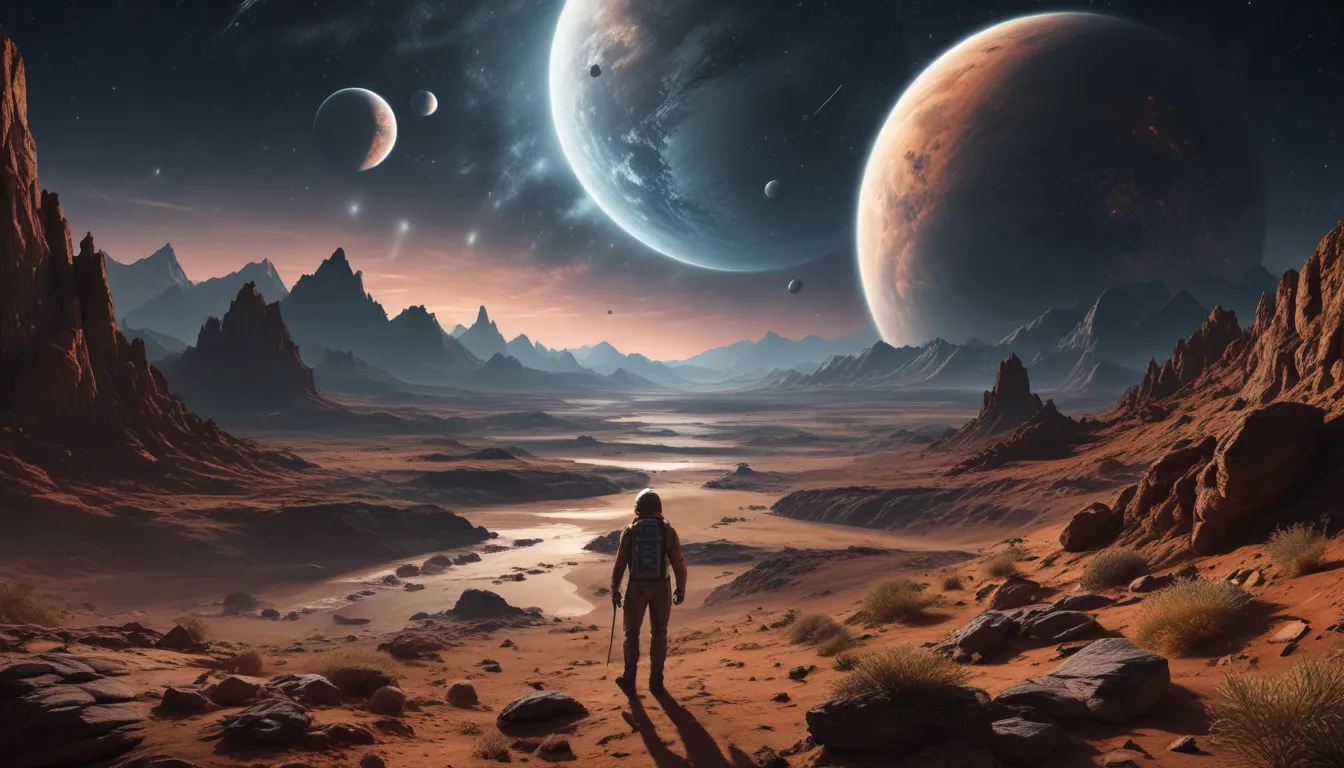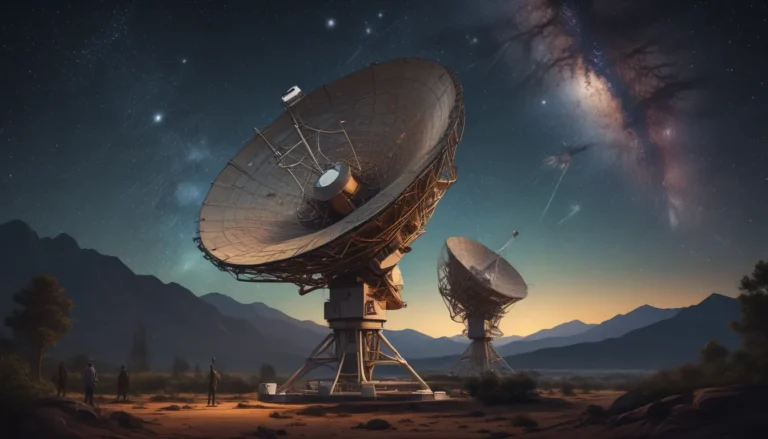The pictures we use in our articles might not show exactly what the words say. We choose these pictures to make you interested in reading more. The pictures work together with the words but don’t take their place. The words still tell you the important facts.
Are you curious about the potential for life beyond Earth? Have you ever wondered about the conditions that make a planet habitable? Join us on a cosmic journey as we delve into the intriguing world of Planetary Habitability Zones and explore the fascinating facts that shed light on their significance in our search for extraterrestrial life.
Key Takeaways:
- The Planetary Habitability Zone is a special region in space where conditions are just right for supporting life, and it’s not just limited to Earth-like planets. Scientists are actively searching for habitable exoplanets, expanding our understanding of what is possible beyond our planet. - The concept of habitability is not binary, and the boundaries of the habitable zone can shift over time. This opens up new realms of scientific exploration and inspires hope for finding other habitable worlds and potential signs of extraterrestrial life.
What is the Planetary Habitability Zone?
The Planetary Habitability Zone refers to the region around a star where conditions are just right for the existence of liquid water, a crucial ingredient for life. These conditions occur when a planet is not too close to its star, resulting in extreme heat, nor too far away, leading to extreme coldness.
Key Factors
The habitability zone depends on various factors like the star’s size, temperature, and luminosity, as well as the planet’s atmosphere and geological processes. It’s a delicate balance of elements that determine whether a planet can host life or not.
Not Limited to Earth-like Planets
The Planetary Habitability Zone is not exclusive to Earth-like planets. There could be other forms of life that thrive under different conditions, such as gas giants with moons or even rogue planets. The possibilities are truly mind-boggling.
Seeking Habitable Exoplanets
Astronomers and scientists are actively searching for exoplanets within the Planetary Habitability Zone. The discovery of distant worlds that may support life is a driving force behind numerous space missions and telescopic observations.
Size Does Matter
The size of a planet plays a significant role in determining its habitability. Planets that are too small might have difficulty retaining an atmosphere, while super-Earths may have higher gravitational forces that make the surface inhospitable.
The Goldilocks Zone is Dynamic
The boundaries of the Planetary Habitability Zone are not fixed. They can shift over time due to changes in a star’s temperature and luminosity, as well as events like solar flares and planetary evolution.
Earth’s Habitable Sweet Spot
Earth itself resides in the Planetary Habitability Zone of our solar system, positioned at an ideal distance from the Sun. This fortunate placement has allowed our planet to flourish with a diverse array of life forms.
Moons Can Be Habitable
While we often focus on planets, habitability can extend to their moons as well. Moons like Saturn’s Enceladus and Jupiter’s Europa have shown promising signs of having subsurface oceans, potential habitats for microbial life.
Venus: A Failed Habitable Planet
Venus, often dubbed Earth’s twin, is an example of a planet that could have been habitable. However, due to its runaway greenhouse effect, Venus now experiences extreme temperatures and a toxic atmosphere, rendering it inhospitable.
Mars: A Future Habitable Destination?
Mars has been the subject of intense scrutiny, with scientists exploring whether it once harbored life or has the potential to support it in the future. While Mars is currently harsh and barren, efforts are underway to terraform the planet and make it more habitable.
Extremeophiles – Life Finds a Way
Life on Earth has shown incredible adaptability, with organisms known as extremophiles thriving in extreme environments such as deep-sea hydrothermal vents, acidic lakes, and Antarctica’s dry valleys. This expands the possibilities of life existing in unconventional habitats within a habitability zone.
Red Dwarfs and the Habitability Conundrum
Red dwarf stars are the most common type in the universe. However, their habitable zones pose unique challenges, with planets in close proximity potentially being tidally locked, leading to extreme temperature variations between the hot and cold sides.
The Rare Earth Hypothesis
The Rare Earth Hypothesis suggests that habitable planets like Earth may be exceptionally rare in the universe. Factors such as plate tectonics, a stable star system, and a large moon have been proposed as essential elements for the development and sustainability of complex life.
The Role of Atmospheres
An atmosphere is vital for maintaining a habitable environment. It provides temperature regulation, protection from harmful radiation, and helps distribute nutrients and resources across a planet’s surface.
The Continuum of Habitability
The concept of habitability is not binary. It exists on a continuum, with varying degrees of suitability for different forms of life. Some planets may be habitable but lack the conditions necessary for complex life to arise.
Panspermia – Life Travelers
Panspermia is the hypothesis that life can be transported between planets or even star systems through comets, asteroids, or other means. This raises the possibility of life originating elsewhere and being brought to habitable zones.
Future Missions and Discoveries
Advancements in technology and our understanding of space continue to fuel hope for finding habitable zones and potentially uncovering signs of extraterrestrial life. Missions like NASA’s James Webb Space Telescope and the European Space Agency’s PLATO mission are set to revolutionize our understanding of planetary habitability.
The Quest for Diversity
Understanding the Planetary Habitability Zone is not solely driven by finding a second Earth. It is about expanding our knowledge of what is possible and the incredible diversity that may exist beyond our planet, opening up new realms of scientific exploration and philosophical contemplation.
The Planetary Habitability Zone is a captivating concept that invites us to ponder life beyond Earth. These 18 intriguing facts provide a glimpse into the fascinating world of habitable zones, igniting our curiosity and pushing the boundaries of our understanding. The possibilities of finding other habitable worlds and the potential for extraterrestrial life continue to inspire and drive scientific exploration.
Conclusion
In conclusion, the concept of a planetary habitability zone is a fascinating one that sheds light on the conditions necessary for the existence of life as we know it. With the vastness of the universe and countless galaxies, understanding the factors that make a planet habitable becomes crucial in our search for extraterrestrial life. Scientists continue to explore and study various planets and their potential habitability, taking into account factors like distance from the star, presence of water, and atmospheric conditions. As our knowledge of planetary habitability zones expands, it opens up new possibilities and questions about the potential for life beyond Earth. The search for habitable planets remains an ongoing endeavor, with various space missions and telescopes dedicated to finding answers. With each discovery and advancement in technology, we come one step closer to unraveling the mysteries of the universe and finding evidence of life beyond our home planet.
FAQs
- What is a planetary habitability zone?
A planetary habitability zone, also known as the Goldilocks zone, is the region around a star where the conditions are just right for the existence of liquid water on a planet’s surface, making it potentially habitable for life.
- How is the habitable zone determined?
The habitable zone is determined based on the distance of a planet from its star and the star’s characteristics. The distance must be within a range where it is neither too close to the star (resulting in extreme heat) nor too far (resulting in extreme cold).
- Are habitable zones limited to Earth-like planets?
No, habitable zones are not limited to Earth-like planets. While the presence of liquid water is a key factor, different types of stars have different sized habitable zones, and planets with different compositions and characteristics could potentially support life outside of Earth’s conditions.
- How do scientists search for habitable planets?
Scientists search for habitable planets using various methods, such as observing changes in a star’s light caused by a planet passing in front of it (transit method), measuring the wobble of a star caused by a planet’s gravitational pull (radial velocity method), or directly imaging distant planets using advanced telescopes.
- Have we discovered any potentially habitable planets?
Yes, scientists have discovered several potentially habitable exoplanets, including Proxima b, TRAPPIST-1e, and Kepler-452b. These planets lie within their star’s habitable zone and exhibit conditions that could support liquid water and potentially sustain life.
- Can life exist outside the habitable zone?
While the habitable zone provides the most favorable conditions for life as we know it, the possibility of life existing outside this zone cannot be ruled out. Different forms of life may adapt and thrive in extreme environments, such as within the icy moons of Jupiter or Saturn.
Exploring planetary habitability zones is just the beginning of our cosmic journey. Dive deeper into habitable zones and their potential for life beyond Earth. Imagine terraforming distant worlds, transforming them into thriving oases. Discover the mind-boggling diversity of exoplanets, each with its unique characteristics and possibilities. As we continue to unravel the mysteries of the universe, let's embrace the wonders that await us in the vast expanse of space.






